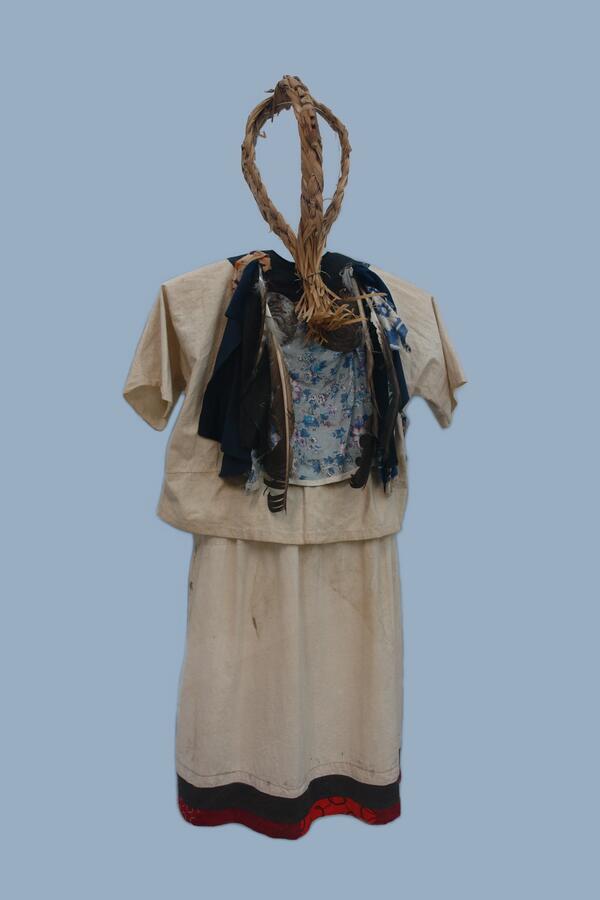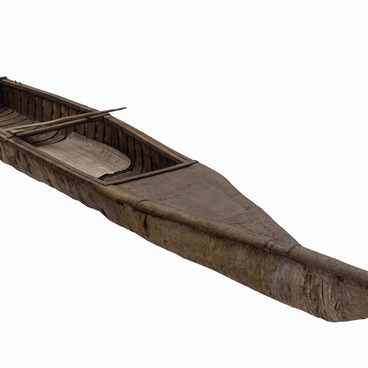The basis of shamanism was the faith in the existence of spirits. Each shaman had his own spirits — his aides and protectors. It was believed that magic power grew depending on the relationship with the spirits and their number in the shaman’s personal pantheon. The Ulchi shamans were divided into two categories — healers and kasata-shamans, who, in addition to treating the sick, “knew how to transfer” the souls of the dead to the afterlife.
Traditionally, the shamanic costume consisted of a white blouse with sleeves up to the elbow, a skirt, and a belt with metal pendants. On the chest, sides and back, as well as on the skirt there were sewn appliqués made of cloth. They depicted the shaman’s “protectors”: snakes, lions, dragons, lizards, toads and even worms. Sometimes they were simply drawn on the cloth with black, red or brown colors.
While performing a kamlanie ritual — “communicating with spirits” — shamans wore caps made of wood shavings, which were woven into plaits. One braid covered the whole head with a hoop, two or three other braids were attached to this hoop and crossed each other on the top of the head. An additional protective element was cloth mittens with images of the protecting spirits.
The costume on display consists of a blouse, a skirt and a headdress. Together with a tambourine and a belt it belonged to the Ulchi shaman Ekaterina Obertalina (1914–2005). She lived in the village of Dudi, Ulchsky district. Ekaterina Obertalina underwent initiation rites and received shamanic accessories from the famous powerful Ulchi shaman Nikolai Kotkin. The shaman woman practiced from the 1980s to the early 2000s.
The blouse was made of white cloth, it was designed as a kimono, equipped with toli mirrors and feathers. The mirrors protected against and repelled attacks of evil spirits. The feathers symbolized the image of a bird, which helped to make transitions to other worlds. Five metal pendants were sewn on the front and back of the blouse.
The decorations and the
presence of certain elements in the costume could indicate the shaman’s rank
and level of magical power. The hat of a strong kasata shaman looked different.
It was made of deerskin or fabric with hanging fur strips from the skins of
certain animals, with metal horns fixed on the top of the hat.



